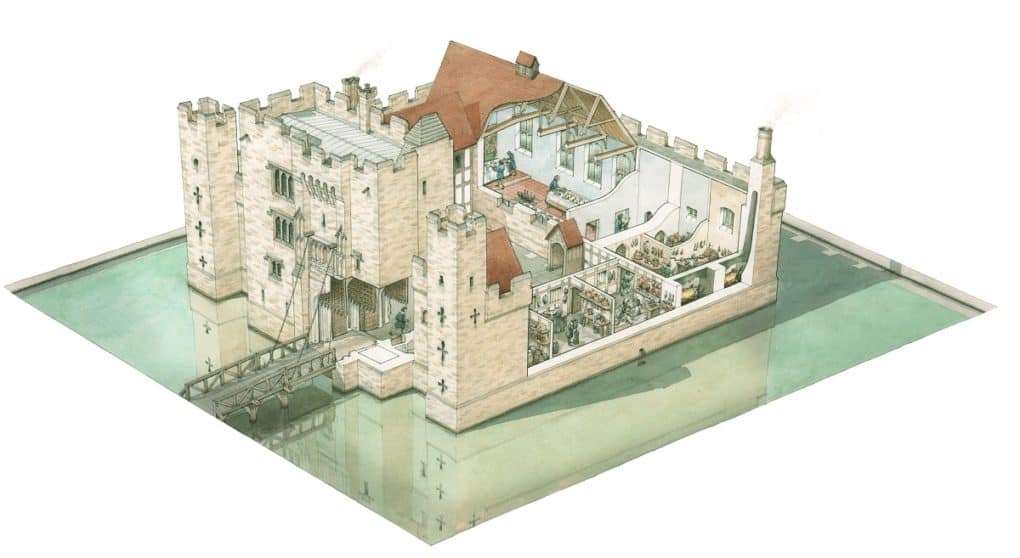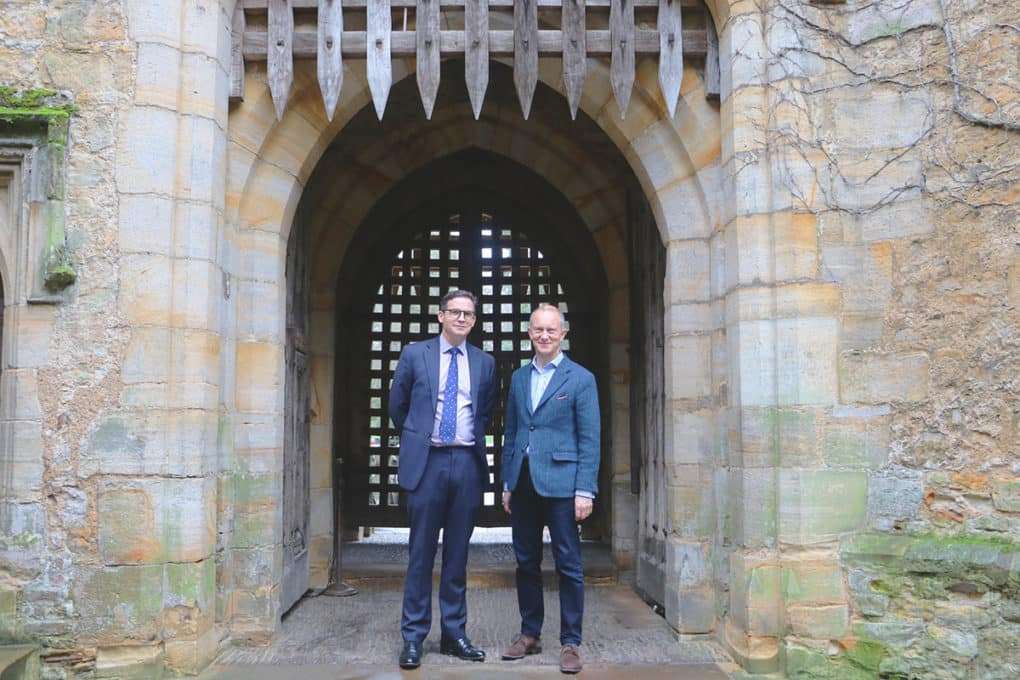
Castle Historian and Assistant Curator Owen Emmerson goes into more detail about the new findings about the history of Hever Castle revealed after research from Simon Thurley in January 2023. A tale of two Hevers.
On 12 January 2023, we were delighted to announce that we had been working for several years on an ambitious project to discover more about the history of the castle and the many people who lived between its striking, crenellated walls.
Working with the esteemed architectural historian, Simon Thurley, the purpose of this project was to confirm when Hever Castle was built and by whom, to understand better how the castle had evolved.
Simon Thurley’s task was unenviable, considering how contradictory the findings of previous attempts had been. However, his ground-breaking research has overturned centuries of traditional history by uncovering a plethora of hitherto unaccounted-for documentary evidence.
His work has given us the most comprehensive understanding of Hever Castle’s history to date. Most excitingly for the village of Hever, Thurley has been able to reassert not only the importance of Hever Castle but the significance of the other manor at Hever that shared so much of its history, too: Hever Brocas.
Tradition had long been that William de Hever had built Hever Castle in the early 1270s, an inference drawn from a license to crenellate a manor at Hever granted by King Henry III on 17th January 1271.
However, King Richard II issued a second license to fortify an estate at Hever some 112 years later, in 1383. This second license had long proven to be a thorn in the side of historians claiming that both licenses applied to Hever Castle. Moreover, the works of John Goodall, Anthony Emery, and Nicolaus Pevsner had all previously argued that, stylistically, Hever Castle dated to the latter of these two dates.
Through meticulous archival research, Thurley concluded that Hever Castle was built in 1383, not by William de Hever, but by John de Cobham of Devonshire. In addition, the manor of Hever Brocas, located less than a mile from the current castle, had obtained a license to crenellate in 1271. The key to disentangling these two manors of Hever was a prominent landowner named Stephen de Pencester, Lord Warden of the Cinque Ports, for 32 years between 1267-1299.

Hever Castle CEO Duncan Leslie and Simon Thurley
Hever Brocas
Through land ownership, Thurley could assert that the manor of Hever Brocas had descended from Stephen de Pencester and that it was Brocas that had been granted a license to crenellate in 1271.
Stephen de Pencester had died without a male heir, and his manor at Hever passed to John de Lynchpole, who granted it to Ralph de Hever and his wife, Hawise. Their son, Thomas, was given free warren in his demesne lands at Hever in 1331. Hever Brocas passed through Thomas’ daughter, Margaret, to John Brocas, who Thurley established owned the lands in 1378.
When John died without issue, his lands passed to Joan: a descendant of Ralph de Hever. Joan married Nicolas Weston, and their manor was granted to Sir Reynold de Cobham. Upon Reynold’s estate inheritance, this manor was first called ‘Hever Brocas’.
Hever Cobham
The lands where Hever Castle (originally named Hever Cobham) was built were also owned by Stephen de Pencester, and they passed through another scion of the Cobham family. Stephen’s daughter, Joan, had inherited her mother’s dower lands which, Thurley concluded, included lands at Hever.
Joan had married Henry Cobham of Randall, and their son, Stephen de Cobham, baron of Rundall (d.1322), held ‘land, a message, and rents at Hever’. Thurley traced these lands through Stephen’s son, John (d.1362); his son Thomas (d.1393-4); and thence to Thomas’ brother, John de Cobham of Devonshire. Accordingly, he was granted a license to crenellate ‘Hever Cobham’ in 1383.
de Hever
The de Hevers were undoubtedly a part of this story. Thurley established that the de Hevers had established a manor at Hever by 1200 and that an earlier William de Hever, son of Walter, had granted the Church of St Peter to Combwell Abbey. Williams’s heirs confirmed this grant in 1220. Later, in 1268, the Priory presented another Walter de Hever (son of Lord Ralph de Hever) with the church’s living.
Walter’s son, William, became a prominent figure, being a custodian of both Canterbury and Arundel Castle. It is likely Ralph de Hever, who inherited Hever Brocas, was a relation of William. Where the original manor that the de Hever family occupied from 1200 was located remains, for now, a mystery. It is a challenge, however, that the curatorial team of Hever remains determined to solve.

Over the coming years, Hever Castle will be re-curated to better display to visitors the thrilling findings of Simon Thurley. From showcasing original timbers dating to 1383 to conveying a richer understanding of the three (perhaps four!) Tudor monarchs who owned the castle, we will shine a new light onto the castle’s importance to history. In doing so, we will also seek to highlight the importance of the village of Hever’s place in history, too.
A version of this article first appeared in The Link
Book your visit to Hever Castle & Gardens.
Within the grounds of the Hever Castle Estate, there are two opportunities for you to stay the night with us.
Hever Castle has played host to many important events and celebrations for over 600 years. In 1903 when William Waldorf Astor set about restoring Hever Castle to its former glory, he added the Astor Wing, to accommodate his family and guests, before creating a lake and the spectacular Italian Garden to house his impressive collection of ancient Greek and Roman statuary.
There are multiple places to eat & drink across the Hever Castle Estate. Select between the Castle & Gardens and Golf Club below to discover more.
Set in the mature grounds of the Hever Castle Estate, Hever Castle Golf Club is a 27 hole Kent golf course that will encourage and inspire all golf enthusiasts.
Set in the mature grounds of the Hever Castle Estate, the Wellbeing Centre consists of five smart treatment rooms.